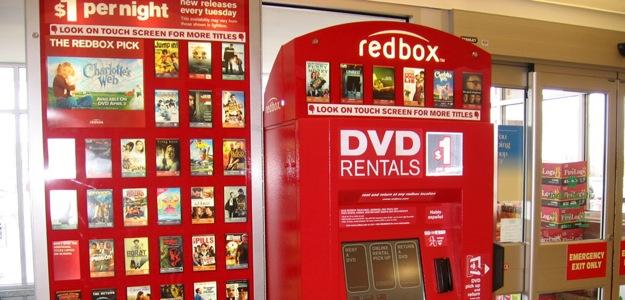 After years of veiled aggression between two sides, we may finally have reached a quiet detente between DVD rental companies and movie studios, with the gamechanger potentially coming in the unexpected – but somewhat logical – form of just a little patience.
After years of veiled aggression between two sides, we may finally have reached a quiet detente between DVD rental companies and movie studios, with the gamechanger potentially coming in the unexpected – but somewhat logical – form of just a little patience.
The light at the end of the consumer tunnel came in the form of news today that Sony will not be exercising a clause that would’ve allowed them to sever its contractual ties to Coinstar’s kiosk-DVD-rental subsidiary Redbox two years early, instead continuing through the original September 2014 completion of the two companies’ distribution agreement. The news was revealed earlier today as part of Coinstar’s 8-K filing with the US Securities and Exchange Commission, and noticed by the Hollywood Reporter.
The refusal to use its “Get Out of Jail Early” card suggests that Sony is satisfied enough with the current Redbox deal, something that may come as a surprise to those who have long felt that movie studios would permanently be at loggerheads with DVD and Blu-Ray distribution companies such as Redbox and Netflix. Both companies were believed to be hurting the DVD and Blu-Ray sellthrough of new movies by offering low cost rentals of new releases to customers immediately after release (This despite the fact that (a) video and DVD rental chains like Blockbuster had been doing this for years, albeit at a slightly different cost/benefit ratio considering rental charges per tape/disc as opposed to subscription payments, and (b) Netflix and Redbox both offer different versions of certain releases with less extra features, meaning that fans who want the whole package would still have to shell out to buy the disc). “With three years of data to analyze, we believe it is a positive sign that Sony has not seen any adverse impact from the Redbox agreement,” wrote analyst Eric Wold of B. Riley about the news, adding that it was also a positive that the studio “did not follow Warner Bros.’ lead in pushing for a delay.” Warners, famously, had instituted a 56-day window between retail release of its movies and availability for purchase by rental companies, a move that some companies got around by simply purchasing retail versions of discs and offering those, instead.
Sony’s decision leaves Redbox in a good place at least until next year, when 20th Century Fox has the ability to exercise a similar option. That April 2013 deadline shouldn’t be a problem for the company, according to Wold: “In terms of relevance, Sony was a greater concern than Fox,” he wrote, “given that Sony generated 12.5% of box office in 2011 and 15.2 percent YTD compared to 9.6 percent and 9.5 percent, respectively, for Fox.” Or, to put it another way, even if Fox did decide to take its ball and go home, any potential damage will be much smaller.
With the delay window mechanism in place for companies that do still have a problem with the idea of rental agencies making their content more cheaply available to the end user, it looks as if Redbox and competitors can sit contentedly for awhile – at least until one of the rental companies works out an exclusivity deal with a major studio and throws everything into disarray again.


